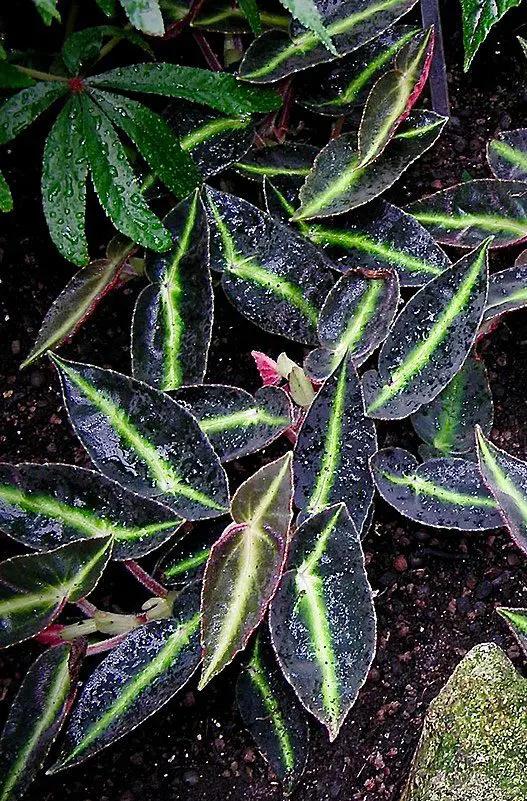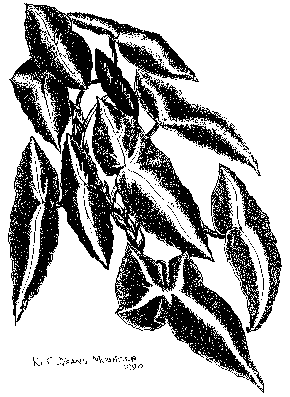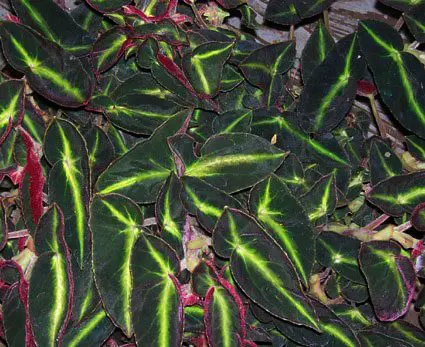B. listada L. B. Smith and D. C. Wasshausen was first introduced to us through the ABS Seed Fund in August 1961 as a new species from Brazil. Later, this plant was determined to be a rare species growing in Rio Grande do Sul, a state located at the southern tip of Brazil near Paraguay and Uruguay.
Nomenclature
For many years the plant was labeled B. listada hort. The abbreviation “hort.” stands for horticulture, and means that this is a horticultural name, not an official botanical Latin name.
When it was determined that this was a species that had not been described and therefore had no official botanical name, Thelma O’Reilly of La Mesa, California furnished the Smithsonian Institute with a type specimen. From this plant, Dr. Lyman Smith and Dr. Dieter Wasshausen wrote a Latin description and legitimized the name of B. listada in the July 1981 Begonian. Listada spelled with “…ta…”, means “striped”.
Description
B. listada, along with its hybrids, is so distinctive that it has its own horticultural group: the shrub-like, distinctive foliage, listada-type begonias.
This species has an elliptical leaf blade that comes to a point at each end. It is covered with thick hairs, which give it a velvety texture. The leaf surface is a dark olive green with a white to chartreuse line down the middle.
The back of the leaf is red. An average leaf measures 4″ by 1″ – 1 3/4″. Occasionally this species will sport and produce arrow-head-like or triangular leaves on a stem. This is not a stable mutation, and will later revert back to the original leaf shape.
Growth habit for this Brazilian is somewhat horizontal. It can make a beautiful hanging basket or can be staked to grow upright. The sparse white flowers appear mostly in the fall and winter, and in strong light the buds are covered with pink hairs.
Hybrids
B. listada has been used for many beautiful hybrids, and its leaf texture and color pattern seem to dominate. some of its offspring are Begonias ‘Helen Michelson’, ‘Mabel Corwin’, ‘Magdalene Madsen’, ‘Murray Morrison’, ‘Oh No’, ‘Raymond George Nelson’, and ‘Caravan’ (formerly know as ‘Serlis’).
Culture
Light: B. listada like strong light, but not intense direct sun.
Feeding: Like most begonias, it responds to frequent fertilizing and forms a bushy mound. I feed it once a week with 20-20-20.
Temperature: The Texas sun slows this begonia down and the leaves may curl or brown on the edge. With diligent care it perks back up in the fall.
Propagation: This species is very easy to propagate by stem or leaf cuttings. From a leaf it quickly makes a compact, bushy plant.
Don Miller’s article first appeared in Begonia Leaflet, newsletter of the Southwest Region.




